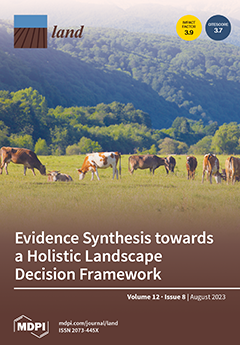Biochar applied to soil has been considered as an effective tool for mitigation of atmospheric carbon dioxide emission and enhancement of carbon storage in soil, which may also enhance soil quality. However, the effect of biochar aged for 5 years on the different
[...] Read more.
Biochar applied to soil has been considered as an effective tool for mitigation of atmospheric carbon dioxide emission and enhancement of carbon storage in soil, which may also enhance soil quality. However, the effect of biochar aged for 5 years on the different carbon fractions and enzyme activities as well as its changes, is not well understood in the cropland sandy soil of northern China. Therefore, a field trial was carried out in 2014 with biochar applied once at 0, 5.25, 10.50, 21.00 and 42.00 g·kg
−1 (BC0, BC1, BC2, BC3, and BC4, respectively). We evaluated the influence of biochar addition to the changes in soil organic carbon (SOC), labile carbon pools (readily oxidized carbon, dissolved organic carbon, and microbial biomass carbon) and enzyme activities (invertase, urease, and catalase). Biochar significantly increased SOC (122.00%) and altered the content of labile carbon (increased ROC, DOC and MBC by 71.29%, 10.35%, and 900.00%, respectively). Soil urease and invertase activities increased by 55.81% and 46.76%, respectively, with an increase in biochar application rate, but catalase activity significantly decreased by 31.79%. The values of the geometric means of labile carbon (0.88) and enzyme activities (2.39) for the BC3 treatment were higher than others, which indicated that the biochar application rate of 21.00 g·kg
−1 is suggested for the sandy soil. Our results suggest that the application of biochar in sandy soil for five years increased soil carbon sequestration, changed enzyme activities and ameliorated soil quality.
Full article
 to open them.
to open them.




